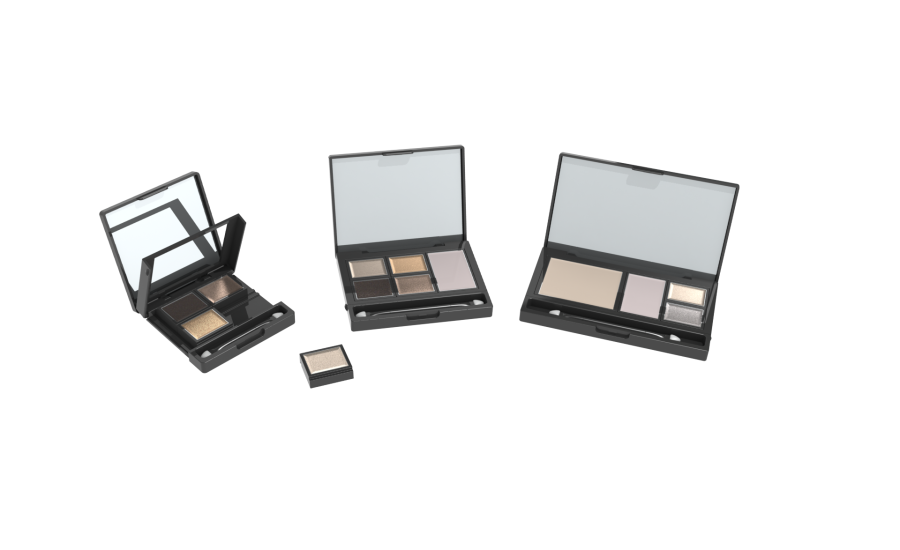Like makeup that enhances a plain face, innovations in materials and value-added features are making cosmetic packaging an increasingly attractive business. According to a recent report released by Research and Markets (researchandmarkets.com), the global cosmetic packaging industry market was worth $24.3 billion in 2014 and is projected to reach $31.4 billion by 2020, an annual growth rate of 4.3%.
Paper comprises a large part of luxury packaging. Smithers Pira’s (smitherspira.com)“Paper-based Packaging Trends to 2019,” report predicts that the cosmetics and fragrances sector, which accounts for 43% of luxury goods sales, will snowball at an annual rate of 6% over the next five years. The global market for luxury goods packaging is expected to increase 19% to $17.9 billion by 2019, according to the research firm. Currently the market for packaging for cosmetics and fragrances; tobacco; confectionery; premium alcoholic drinks; gourmet food; and watches and jewelry stands at $14.2 billion.
“This new (Smithers Pira) report signifies that the industry is about to enter a Golden Era of product development,” says Lee Henderson, manager of European sustainability and stakeholder outreach at Asia Pulp and Paper. “The luxury packaging sector is on the cusp of a tipping point, where a rise in demand for luxury goods and the introduction of new technology will unlock a period of unprecedented innovation in the market. The proliferation of 3-D printing, for example, enables manufacturers to transform designs into products within hours, and so we can expect to see an exciting range of new products hit the shelves as brands experiment to further differentiate their products.”
One trend emerging is that consumers’ increasing awareness of environmental issues is fueling the development of sustainable packaging for cosmetics. Luxury brand owners are seeking to reduce the environmental impact of their product packaging, thus packagers are introducing lighter and more reusable materials.
Susan Nichols, founder and CEO of International Cosmetic Suppliers, says cosmetics packaging will be an area of major innovations, and predicts less waste and more reusability in the next five to 10 years.
“The cosmetic industry is developing and launching many new and unique delivery methods with innovative applicators,” she says. “These innovations in cosmetic packaging will influence the rest of the packaging industry such as the trend and variety of pencil packaging, droppers, roller balls, refillable and reusable packaging, brushes and unique shaped applicators.”
Nearly 25 years since its founding in 1991, ICS is continuing to develop new and improved ways to appeal to its customers. The company’s patent-pending modular refillable compact, for instance, recently won an innovation award from the Institute of Packaging Professionals. The company sees the trend for refillable compacts and palettes growing.
“The limitations in other refillable packs available on the market now are that they are often difficult to use and there is a high chance to damage the formulation when popping out the interchangeable/removable pans,” Nichols says about the award-winning pack. “With our design, we have a sliding feature which eliminates the need to pop out the pans. And our unique modular design offers a simple, intuitive way for consumers to use the palette to mix and match the pans, shapes and colors as desired. In addition, our patent-pending sliding design with frame offers our clients a unique point of differentiation.”
Another factor contributing to rising fortunes in cosmetic packaging is the increasing ability of packaging companies to incorporate anti-counterfeiting sensors and thin film electronics into their materials. According to Smithers Pira, the global market for anti-counterfeiting was valued at $2.33 billion in 2013, encompassing value-added tamper-evident, track and trace, product authentication and anti-theft technologies. The luxury goods element within this is hard to assess, but in the case of cosmetics, it is predicted that this market will exceed $100 million worldwide in the near future.
Interactive and identification methods such as quick response codes, advanced barcode technology, and near-field communication (NFC) labels are being used in packaging to actively engage consumers with the brand. As luxury brands explore new ways of incorporating codes into their packaging without affecting the aesthetics, they are expected to establish a large presence in luxury packaging over the next five years, officials say.
Personalization is something luxury brands are looking at and while the volume is small, it is growing as they build relationships with customers. This provides an opportunity for digital printers and converters who have successfully run personalization campaigns on products such as beverages, for instance.
“Packaging that is sustainable, personalized, has the ability to interact with digital technology, prevents counterfeiting and uses the latest state-of-the-art printing technology is not just a demand of buyers of luxury goods, but reflective of general consumer preferences,” Henderson says. “The packaging industry should now plan for these trends to become the norm far beyond simply luxury packaging.”


